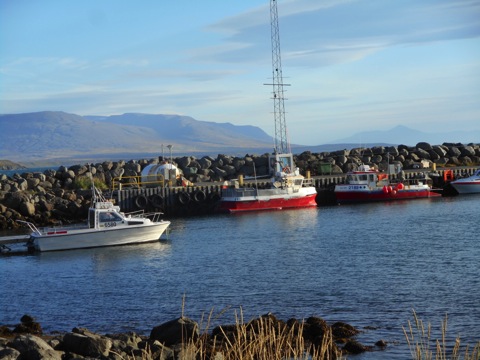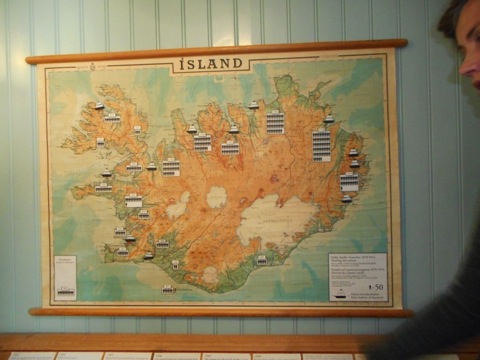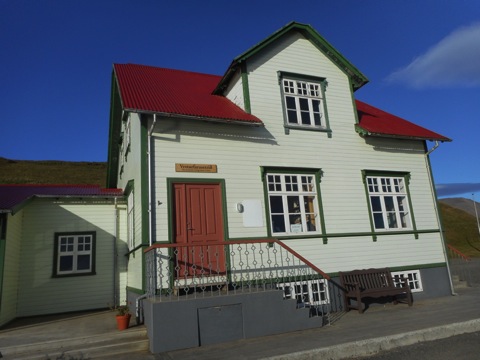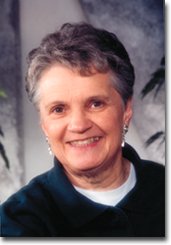
HOSFOS, ICELAND
Hofsos is a little village on the north coast of Iceland with a population of 200. It is one of the oldest trading ports with an economy based on fishing. But tourism is also important to the community because in 1996, the Icelandic Emigration Center opened. It is dedicated to the thousands of Icelanders who were forced to leave their homeland.
On January 3rd, 1875, a bright orange glow and a huge cloud of black smoke were seen from a number of coastal villages. Mount Askja had erupted spewing millions of tons of debris into the air. Over the next few weeks, dozens of eruptions continued to fill the sky with smoke. Finally it erupted with such force that lethal smoke and ash rained down over the entire island, ruining the land.
This eruption followed several exceptionally cold years and poor crops. The people were literally starving and knew they had to leave. The Danish government offered to relocate the entire population to Denmark but that offer was declined.
The obvious choice was North America. As early as 1872, 235 Icelanders had immigrated, settling on the western shore of Lake Winnipeg. When Sigtryggur Jonasson heard of the terrible conditions in his homeland, he returned to encourage his people to come to Canada and became known as the “Father of New Iceland”.
In selecting a site, Manitoba seemed to be the answer. The immigrants wanted good farm land and access to a lake so both farmers and fishermen could work. That year, 1200 emigrated and many joined the colony on Lake Winnipeg. They named it Gimli, which in Icelandic means ”paradise”.

Each man on the map indicates 50 people who emigrated.
They were promised local self- government, a judicial system, and control of their schools plus 27,000 acres. But a small pox epidemic in 1876 -77 ravaged the population and by 1881 the settlement was reduced to 250 souls.
In 1886 the West exploded when 16,000 Icelanders arrived to take up Lord Dufferin’s offer of free land: 160 acres described as the best land imaginable. For many, finding that wonderful land took years and endless moves.
They left Iceland via ferry to Scotland, then by steam across the vast Pacific, by rail to the prairies and settlement on Lake Winnipeg. From here many ventured into the Northwest Territories,( which became Saskatchewan in 1905), establishing Thingvalla and Logberg near present day Churchbridge and from here to Tantallon, the Quill Lakes, Fishing Lake, Foam Lake, Wynyard and Elfros.
The Emigration Center in Hofsos was founded to promote contact between the descendants of those who emigrated between 1870 and 1910, and the people of Iceland. Three buildings are dedicated to exhibits, photographs, and information about those who left. Other buildings include a genealogy service, a library and a gift shop.

Hofsos Emigration Centre
In Family House, genealogical research and data collection are ongoing, with a Manitoban genealogist of Icelandic descent. While I was there a young couple from Winnipeg came in to see if they could find information on the young man’s grandparents. He was surprised and delighted to find a photograph of them and his mother, then a baby, sitting on her mother’s knee. The joy on his face left no doubt that Icelandic people have a strong sense of cultural identity.
The hardships were staggering. They had to sell their possessions, which usually consisted of a small house and a few sheep, and only take what they could carry. Tickets for the sea voyage were expensive so in some cases only part of the family could leave. Even the voyage was dangerous and many died because living conditions on the ships were so horrible.
On arrival in Canada they could choose where to go. Some went to Wisconsin, Minnesota, Nebraska and Nova Scotia to join friends or relatives. But many accepted Lord Dufferin’s offer for free transportation to New Iceland. He believed so strongly, that the Icelandic people would be excellent citizens.
Gimli turned out to be anything but paradise. The people were not prepared for the harsh winter. Despite the severity of their situation, nine days after they arrived, they asked for permission to establish a school. Icelandic culture places a high value on education, hard work, and honesty. English was taught in the school and Icelandic in the home.
Manitoba is home to the largest Icelandic population outside of Iceland with 26,000 claiming Icelandic descent according to the last census taken in 2011. In Canada, that figure is 94,205. They came as pioneer settlers from the land of the Vikings, a strong and sturdy race with an instinctive love for freedom and they were successful. Thank you Lord Dufferin!
Note: Lord Dufferin was the 3rd Governor General of Canada from 1872-1878. He was an excellent representative of Queen Victoria.
